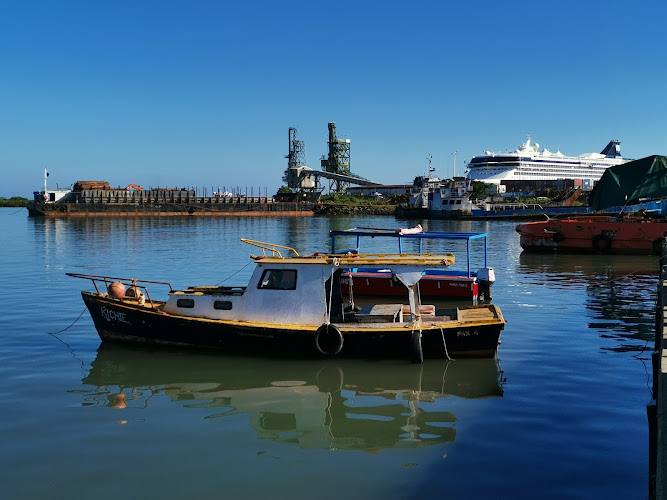
Lautoka Wharf
About Lautoka Wharf
Description
Look, I've been to quite a few ports in my travels, but there's something special about Lautoka Wharf. It's Fiji's second-largest port, and boy does it pack a punch when it comes to maritime action! The first thing that'll catch your eye is the massive sugar terminal - after all, this place has been the sugar capital of Fiji since forever. And while it might be a working port first, it's actually become quite the spot for travelers looking to experience a slice of authentic Fijian maritime life.Key Features
• The iconic sugar terminal and storage facilities that showcase Fiji's main export • A bustling commercial fishing dock where local fishermen bring in their daily catch • Modern cruise ship terminal that welcomes international vessels • Fascinating mix of cargo operations and passenger facilities • Traditional market nearby where locals sell fresh produce and seafood • Spectacular mountain backdrop that makes for amazing sunrise photos • Clear views of nearby islands on good weather days • Wheelchair-accessible entrance and parking facilities • Historical significance as a major South Pacific trading port • Active container terminal handling international cargoBest Time to Visit
Trust me on this one - early morning is absolutely the best time to check out Lautoka Wharf. That's when you'll catch the local fishing boats coming in with their catches, and the whole place has this amazing energy about it. The weather in Fiji is pretty good year-round, but if you're specifically planning a visit to the wharf, I'd suggest coming between May and October. The temperatures are milder, and there's less chance of rain mucking up your plans.How to Get There
Getting to Lautoka Wharf is pretty straightforward. If you're staying in Nadi, you can hop on a local bus - it's about a 30-minute ride and honestly, it's an experience in itself! Taxis are readily available too, and most drivers know the wharf like the back of their hand. But here's a pro tip: if you're coming from other parts of Fiji, consider taking the scenic route along Queens Road. The coastal views are absolutely worth it. And if you're arriving on a cruise ship, well, you're already there!Tips for Visiting
Having spent quite a bit of time around here, I can tell you there are some things you'll want to keep in mind. First off, remember this is an active port - not just a tourist attraction. Respect the working areas and stay within designated visitor zones. The best photo opportunities are usually in the early morning or late afternoon when the light is perfect for capturing those gorgeous mountain backdrops. Bring some cash if you're planning to check out the nearby market - trust me, you won't want to miss out on the fresh tropical fruits. Wear comfortable shoes because the wharf area is pretty extensive, and you'll do quite a bit of walking. And don't forget your camera - the contrast between industrial port life and traditional fishing boats makes for some really unique shots. Oh, and here's something most people don't know - if you time your visit right, you might catch the sugar loading operations in action. It's actually pretty fascinating to watch, especially if you've got kids who are into big machinery. Just keep in mind that the port can get pretty busy during sugar cane season (June to December). During cruise ship days, the area gets significantly more crowded, so if you're not arriving by cruise ship, you might want to plan your visit for a different day. The locals are incredibly friendly, but remember to ask permission before taking photos of people or their boats - it's just good manners, you know? If you're visiting during the wet season (November to April), bring an umbrella or rain jacket. The weather can change pretty quickly, and while a tropical shower might sound romantic, getting soaked while exploring a working port isn't exactly fun - learned that one the hard way! For those interested in Fiji's maritime history, chat with some of the local workers if they're not too busy. They often have fascinating stories about the port's evolution and its role in Fiji's development. Just remember to be respectful of their work schedule - these folks are running one of the country's most important ports, after all. Water and sun protection are absolute must-haves. The Fijian sun can be intense, and there's not always a lot of shade around the wharf. And if you're planning to buy some fresh fish from the local fishermen (which I totally recommend), bring a cooler bag - you'll thank me later when you're enjoying the freshest fish dinner of your life!More Details
Find Accommodations Nearby
Recommended Tours & Activities
Visitor Reviews
There are no reviews yet. Be the first one to write one.